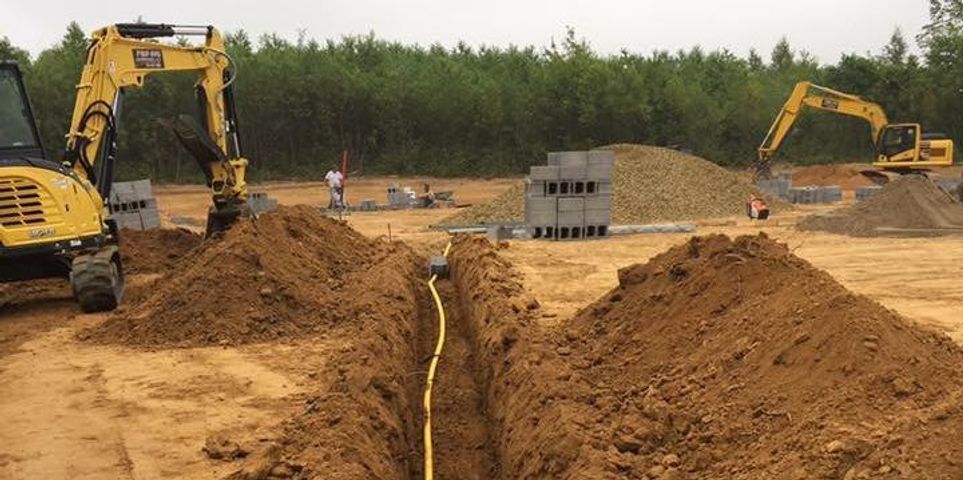How Do Positive & Negative Drainage Differ?

Drainage is a crucial aspect of land development that determines how water will flow near a property. During the early stages of site development, excavating contractors develop a drainage strategy to prevent water from harming physical structures and eroding soil. Learn more about this topic with a brief look at the differences between positive and negative drainage—and how professionals can prevent drainage problems during excavation and construction.
Positive Drainage
Positive drainage refers to systems that direct water away from a property—such as by creating declining slopes near the foundation base. Building codes typically require these systems to be in place to reduce the risk of water damage to the foundation and basement.
 Typically, the slope must be angled so that rain and other runoff will flow away from the property to a lower elevation—such as wastewater and sewer outlets. Excavating contractors must also make sure the land is graded so that water doesn't pool and eventually cause the soil to erode.
Typically, the slope must be angled so that rain and other runoff will flow away from the property to a lower elevation—such as wastewater and sewer outlets. Excavating contractors must also make sure the land is graded so that water doesn't pool and eventually cause the soil to erode.
Negative Drainage
If your property has negative drainage, it means that the land is graded so that water flows toward the foundation. If this is not corrected, moisture can collect near the structure, leading to extensive foundation damage, basement flooding, as well as mold and mildew issues.
How to Prevent Common Drainage Issues
Problematic Elevation
Building property at a low elevation doesn’t allow for positive drainage. While grading can curtail these issues, it may also be necessary to raise the house slab during construction. If elevation problems persist, sub-surface drainage systems—such as slotted PVC pipes and mole channels can help direct water away.
Depressions
Whether due to improper excavation or gradual soil erosion, depressions in the ground can create water traps. In some cases, excavating contractors can correct this by re-grading the land. However, if grading and gravity aren’t enough to support proper drainage, retaining walls may be used to encourage the positive movement.
Pavement
If a paved pathway slopes toward a building, it can create negative drainage. Ideally, this problem can be avoided by strategically placing paved surfaces to allow for positive drainage. However, sub-permeable surfaces and pipes can also help.
Supporting residential and commercial development throughout Elk County, PA, Pro-Dig Enterprises is a leading resource for land clearing and excavation. Using advanced equipment and techniques, this excavating contractor will identify potential drainage issues early on and implement solutions to prevent them, like strategic grading. To learn more about these services or to request an estimate, call (814) 781-1506.
About the Business
Have a question? Ask the experts!
Send your question

